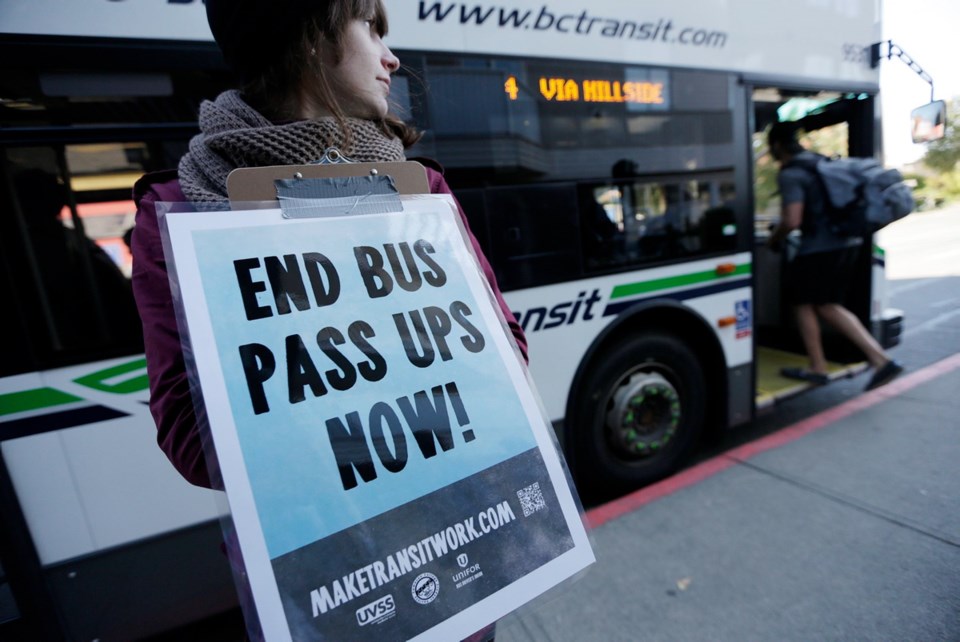Sometimes the toughest thing about going to school is getting there.
The longtime problem of bus “pass-ups” — people left standing at the roadside because a bus is already full — has re-emerged this year.
From September to December 2012, about 20,000 passengers were left behind by crowded buses on their way to Camosun College, the University of Victoria and other destinations. The trend is back as the 2013-14 academic year begins.
Making that point Monday morning were student leaders, local politicians and officials from Unifor — the union representing bus drivers. They gathered at what they said is a particularly troublesome bus stop just east of Hillside Avenue and Quadra Street to put the spotlight not only on pass-ups, but also overcrowding and the lack of bus frequency.
Monday’s event was part of a campaign called Make Transit Work that involves the Camosun and UVic student societies and Unifor. Signatures are being collected on a petition that calls on the provincial government and the Victoria Regional Transit Commission to seek answers.
Simka Marshall, a political-science student at Camosun’s Lansdowne campus, said September is a hectic time for both students and transit.
“September is a really, really busy time for students,” said Marshall, who also serves as the external executive for the Camosun College Student Society. “A lot of students have just moved back, they’re just getting back into the groove of things and trying to adjust to their schedules.”
Being passed up by a full bus is a big frustration, she said.
“It causes students to be late for classes and it causes students to miss classes, which obviously is a major issue.”
Marshall said her former commute, a 45-minute bus ride from Esquimalt to Camosun, could be particularly difficult.
“The most problematic times I had were leaving school. I would leave around 4 o’clock and the buses would be really full from all the UVic students. And, in addition, there’d be a large group of Camosun students trying to get on the bus.
“So I’d get passed up a couple of times.” It was tough to take after a long day of classes, she said.
B.C. Transit CEO Manuel Achadinha was at the demonstration site as part of an effort by executive and management staff to monitor bus stops during the first two weeks of school. Transit spokeswoman Meribeth Burton, who has been among those stationed at various stops, said this is the second year of the initiative.
She said it aims to engage passengers, answer their questions and make sure they know the basics of the bus system.
Such issues as pass-ups are being met with the addition of 5,000 service hours to the system, most of which are dedicated to overloads, Burton said. She said there will be four overload buses on weekdays that can head to routes where demand is highest.
Bus driver and union representative Jim Pullan said the proximity of Camosun’s Lansdowne campus and UVic is telling at some bus stops.
“This is one of the most notorious bus stops in Victoria,” he said of the stop near Hillside and Quadra. “And there’s a couple on McKenzie and Quadra that are the same thing.
Pullan said pass-ups are especially prevalent from 8:30-10:30 a.m. and from 3-6 p.m. Bus drivers think there are options other than raising taxes that can help in dealing with the problem, he said.
Victoria-Swan Lake NDP MLA Rob Fleming said solutions should start at the provincial level. “The root of this is the provincial share of funding for transit services in Greater Victoria and other communities served by B.C. Transit continues to decline as a percentage of revenue.”
According to a statement from the Ministry of Transportation, B.C.’s contribution toward the operation of transit systems is already the highest in Canada and more than double the national average.



